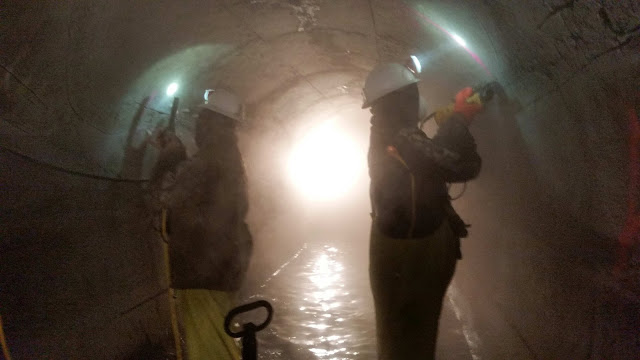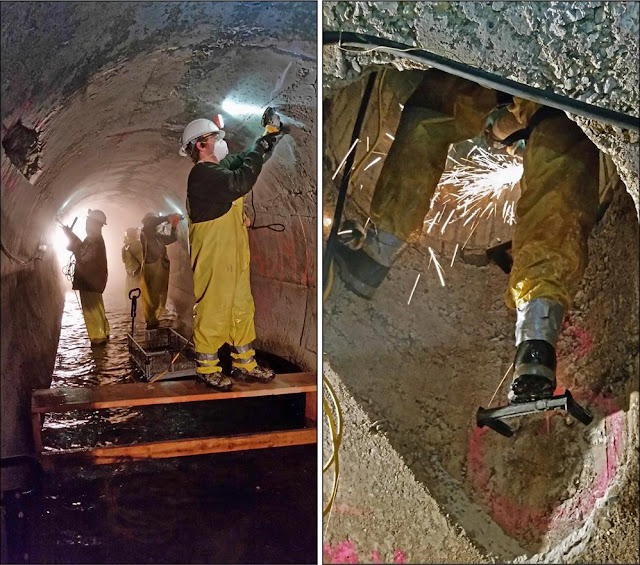
Mystery-of-the-Month – January
By Dave Vlasin
 |
| Erosion control measures are necessary even in underground tunnels. |
What’s been happening thirty feet underground this winter?
If you recall, last April we updated you on our Beltline Maintenance and Repair Project. We told you how District and Barr Engineering staff walked and inspected over 38,000 feet of the Beltline and Battle Creek Storm Water Tunnels. To read last year’s article, click here.
 |
| Barr and District staff gathered information and took notes during the 2014-2015 Beltline inspection. |
 |
| Avoiding a waterfall in the tunnel. |
After a bidding process, PCi Roads, LLC won the contract. PCi has two years to complete the project and were eager to get started on January 1st. They will continue to work all winter, as long as the cold weather allows. Next winter they will finish any remaining work.
This type of work is best done in the winter months since everything is frozen and the risk of getting flooded out of the storm water tunnel is greatly reduced.
PCi has currently prepped about 500 feet and are getting ready to begin filling cracks and complete surface repairs.
To help you get an idea of what it’s actually like to be making repairs in the tunnel, here are some pictures of work that’s currently being done thirty feet underground.
 |
| PCi prepping the Beaver Lake Branch in January of 2017. |
 |
| PCi employees working on the Beaver Lake Branch. |
 |
| PCi cleaning and injecting material into cracks in the tunnel. |
Before the spring rains kick us out, we hope to get at least a couple thousand feet completed.